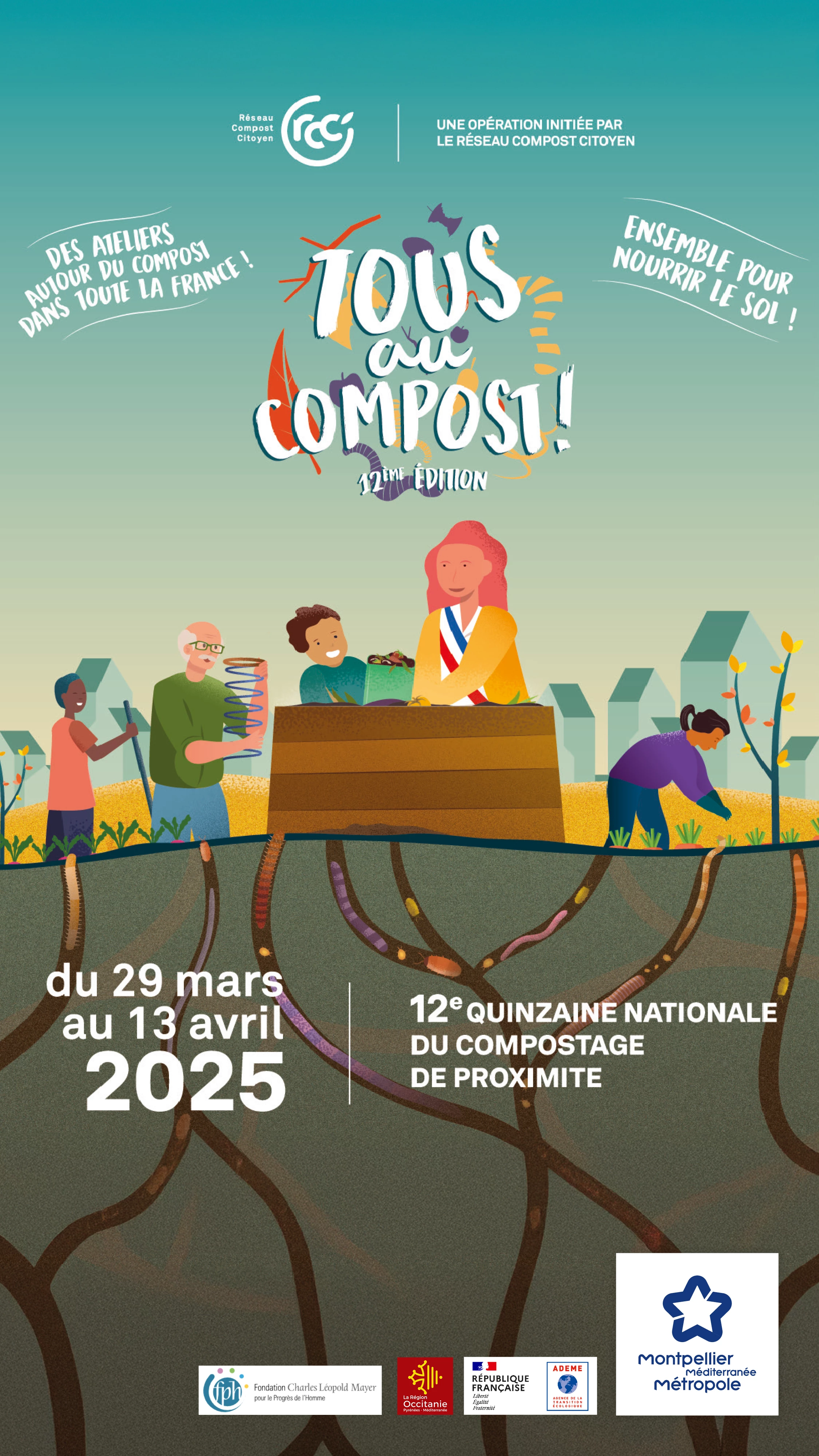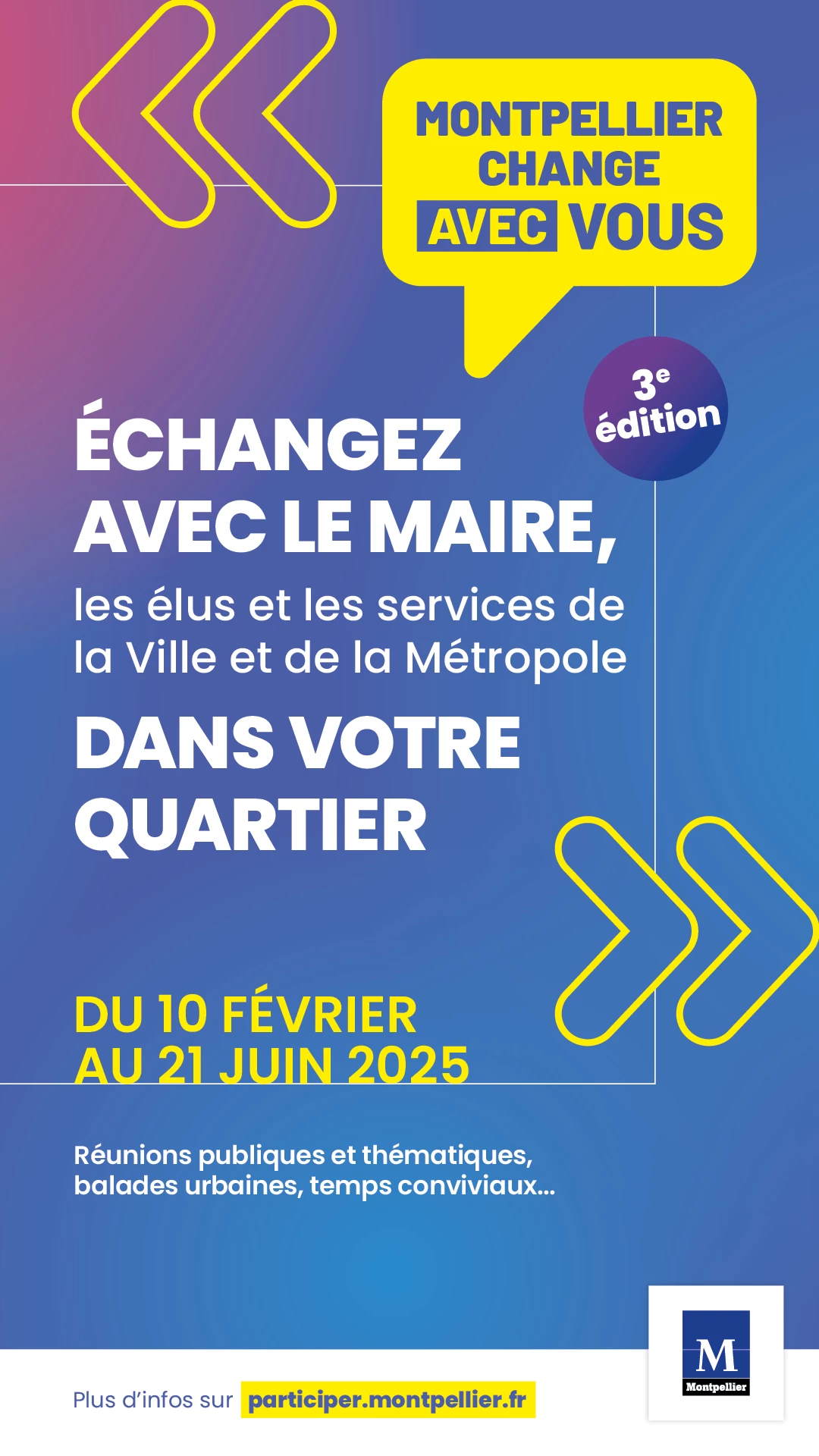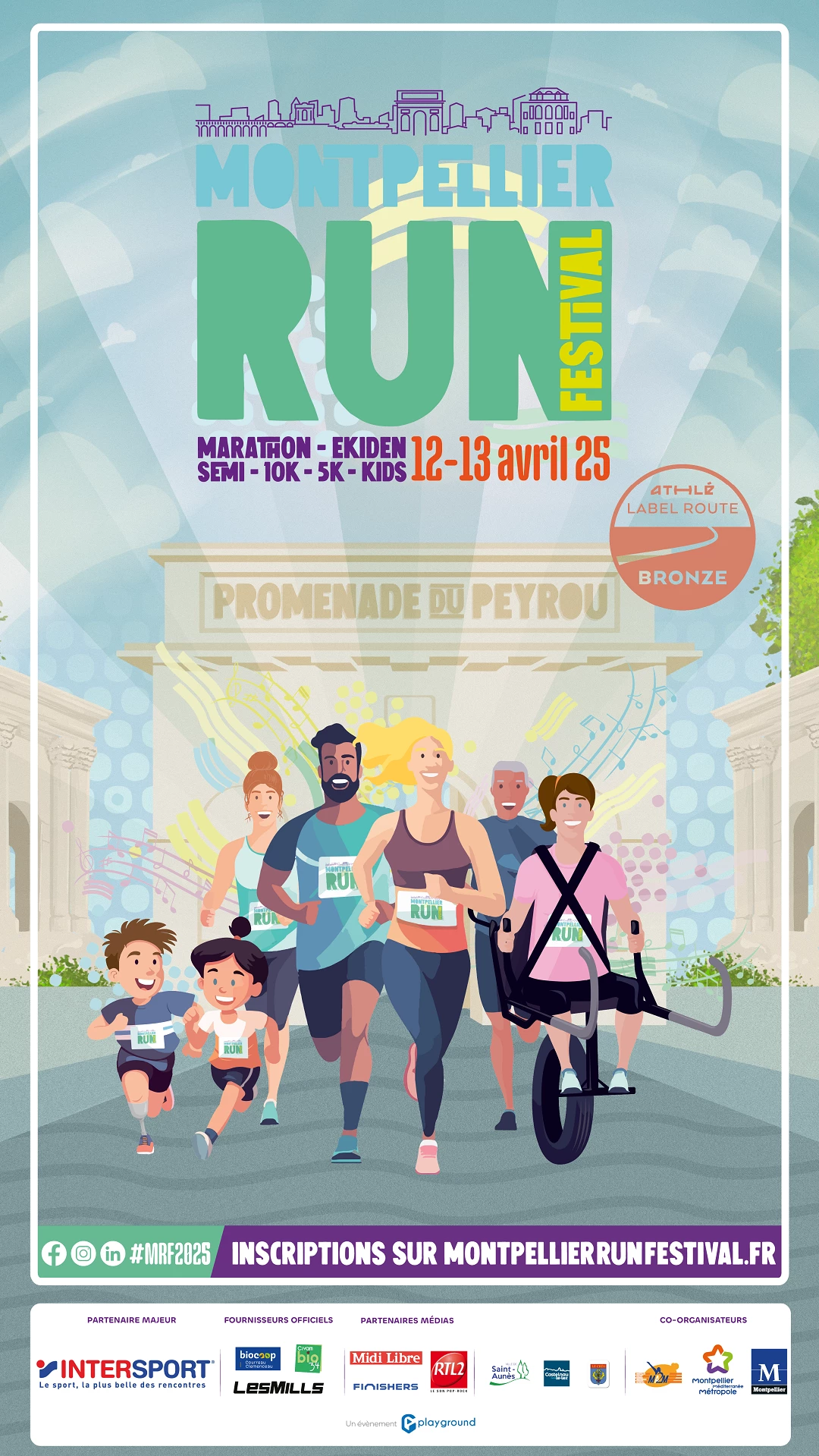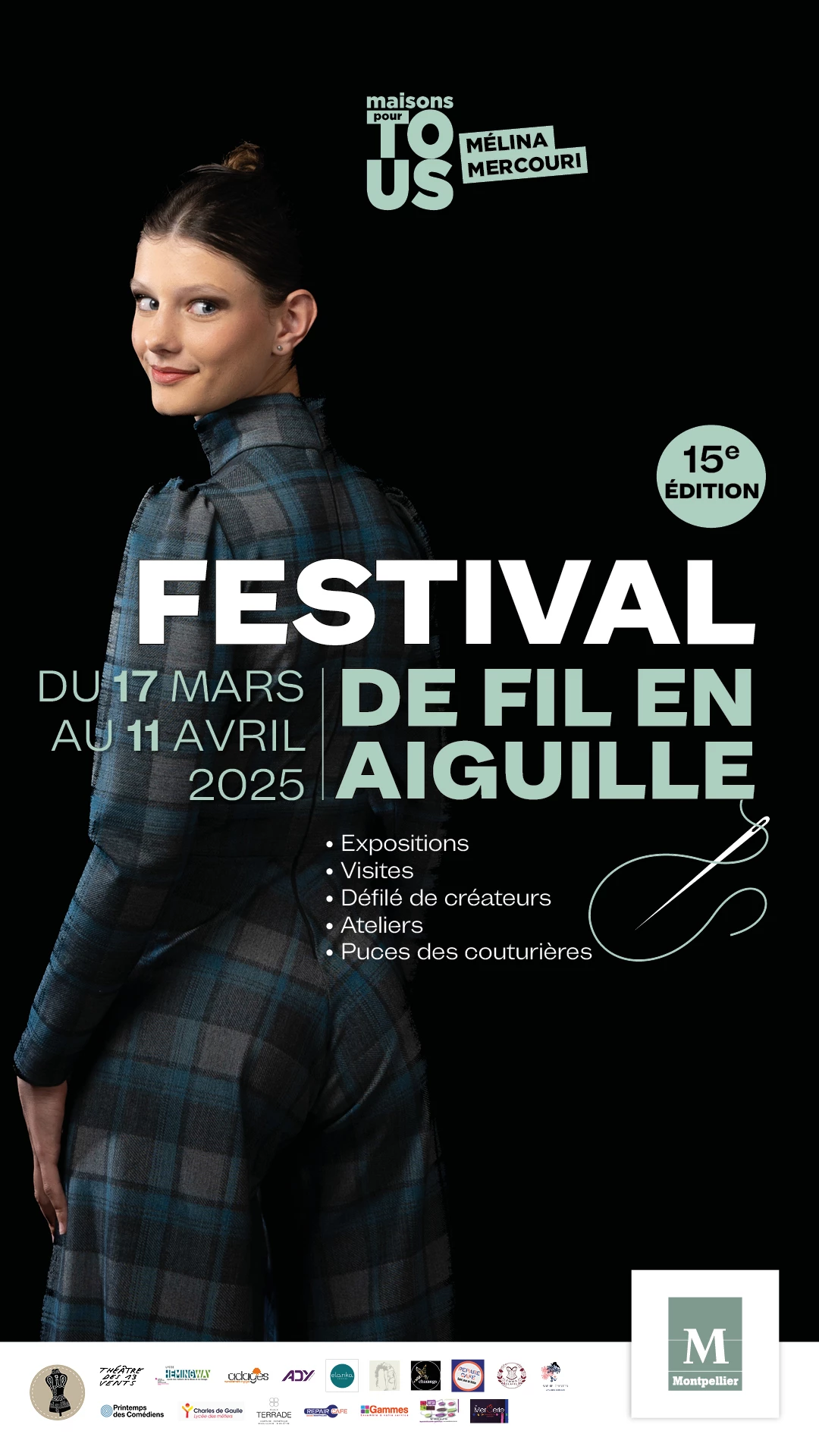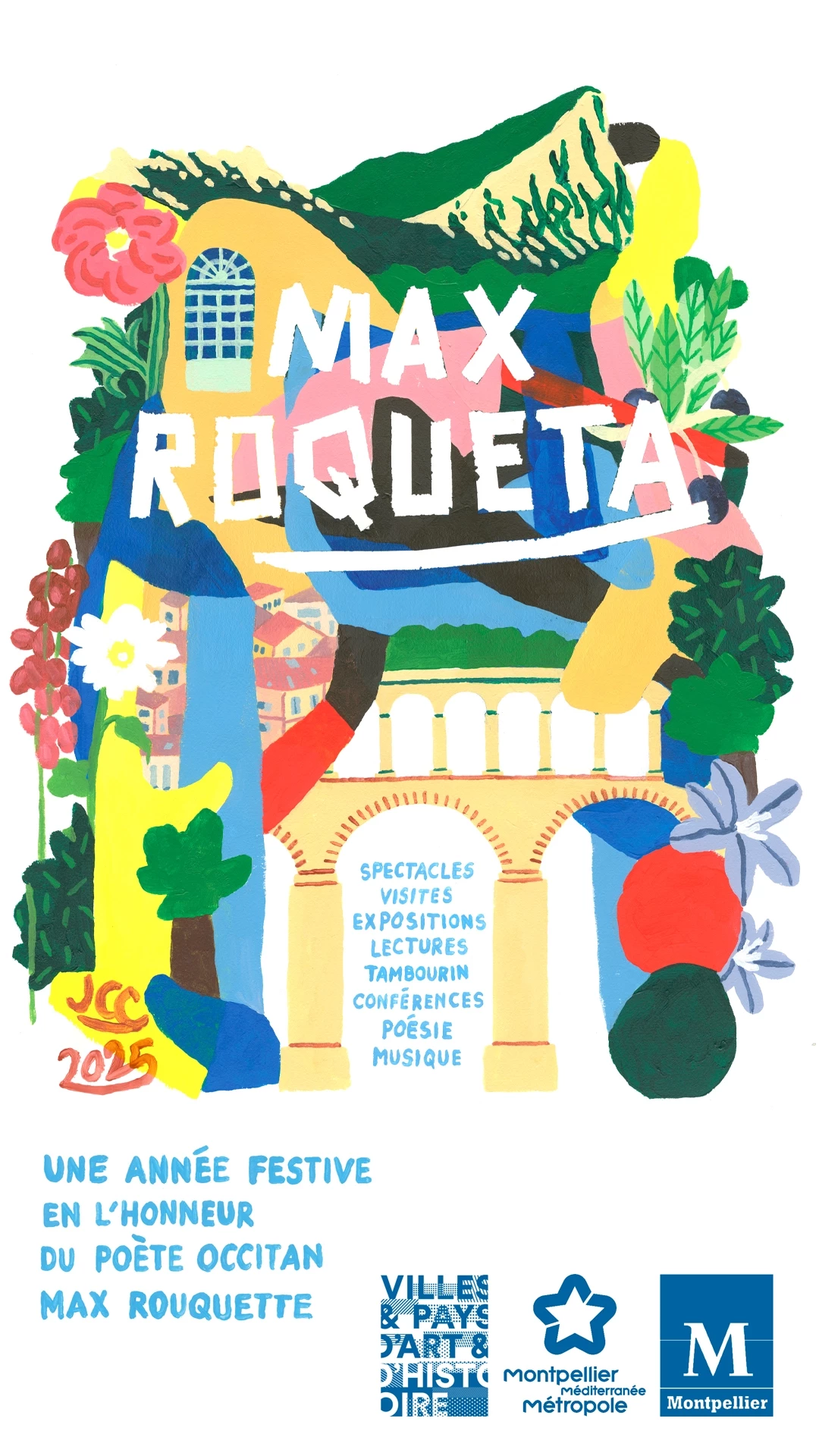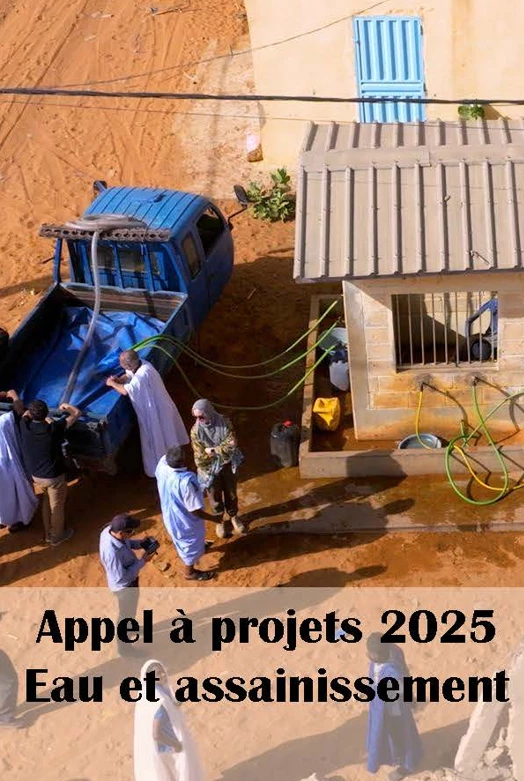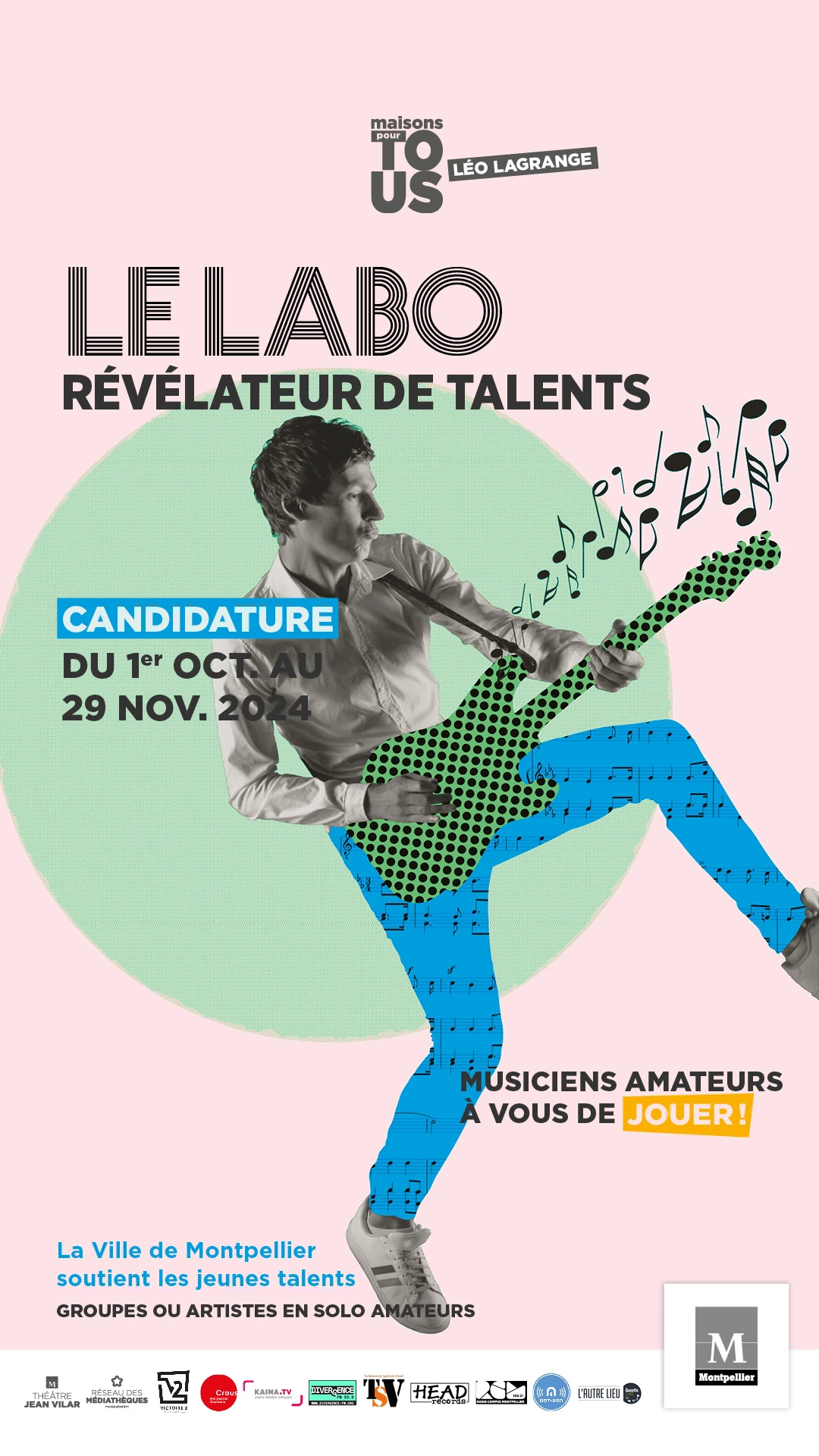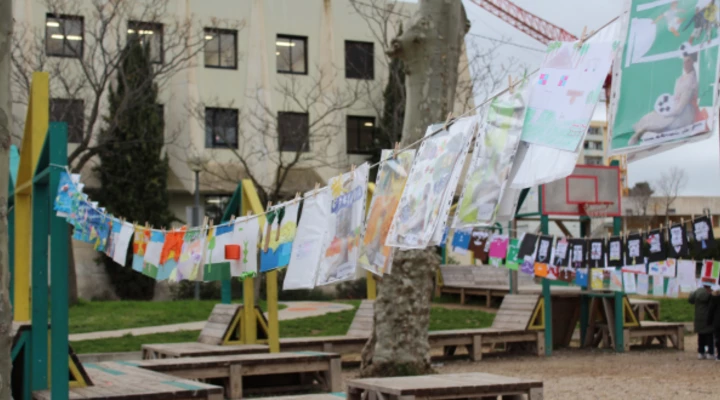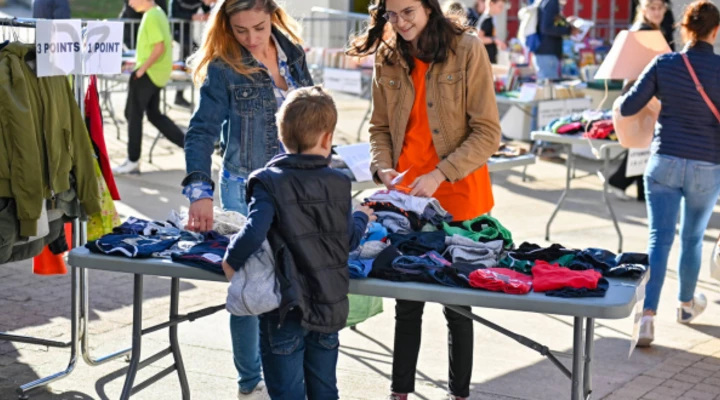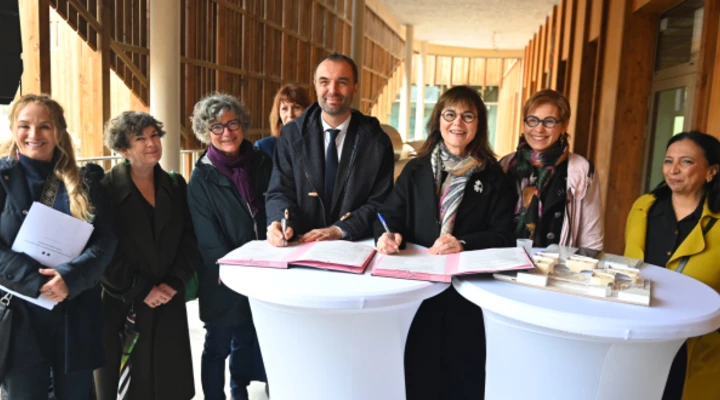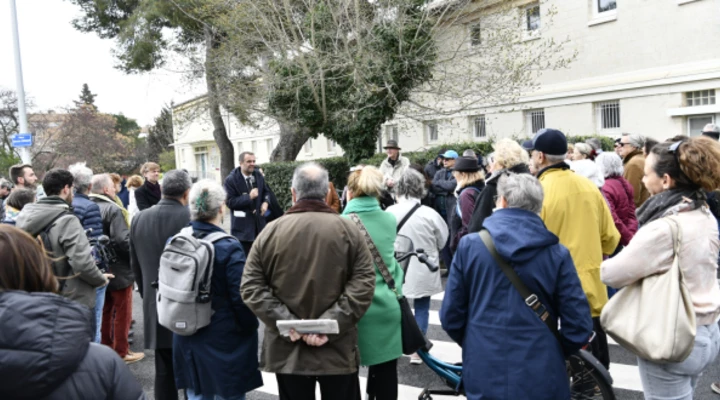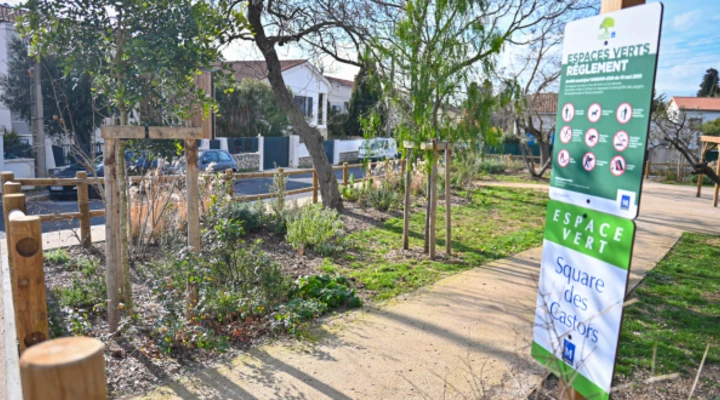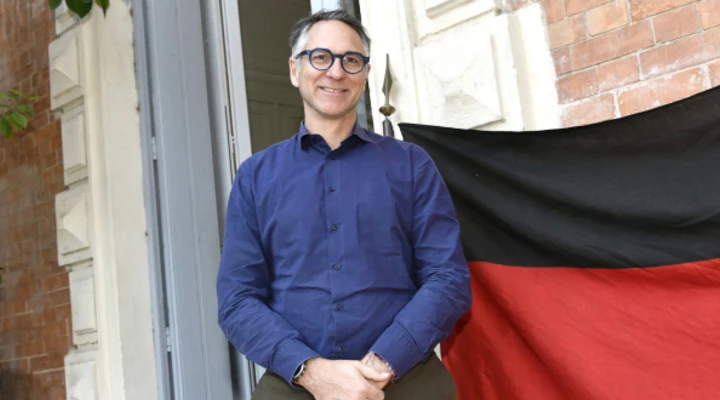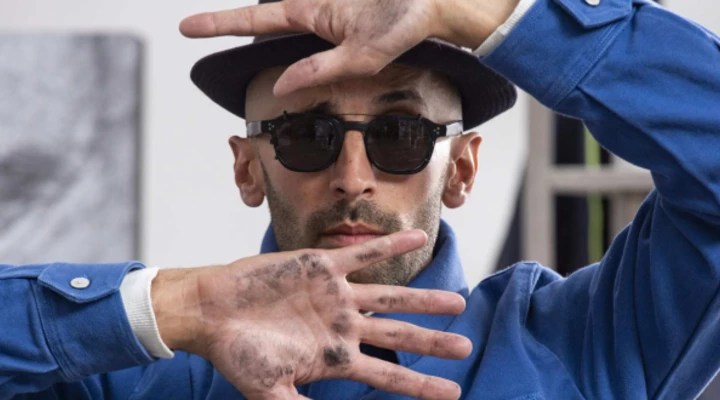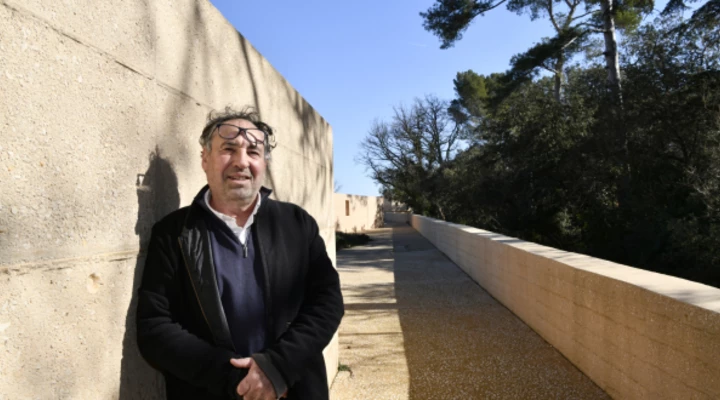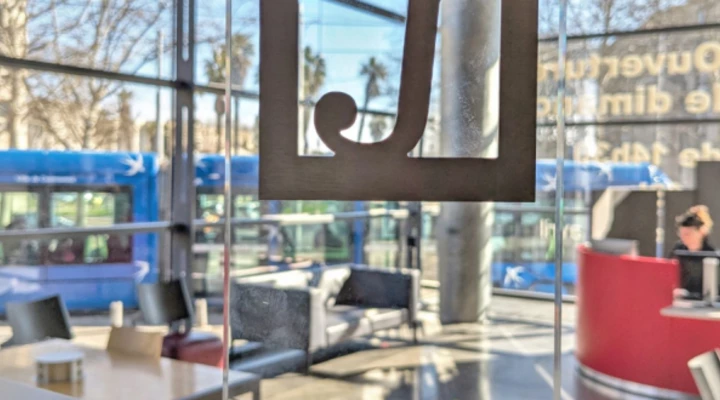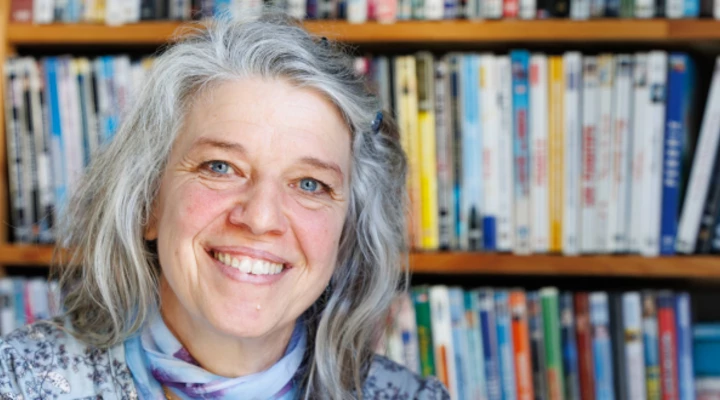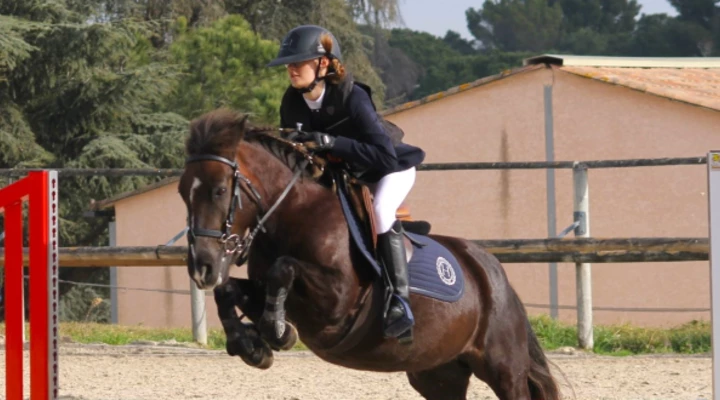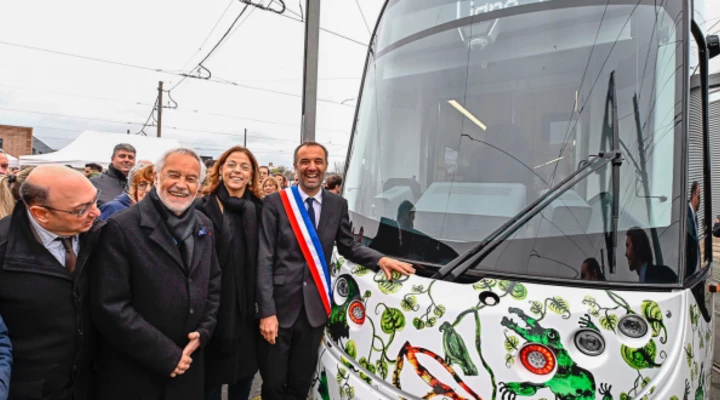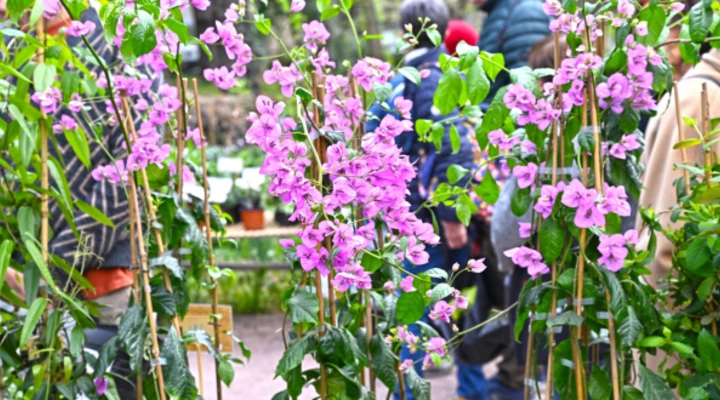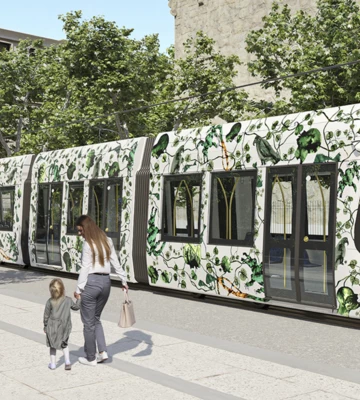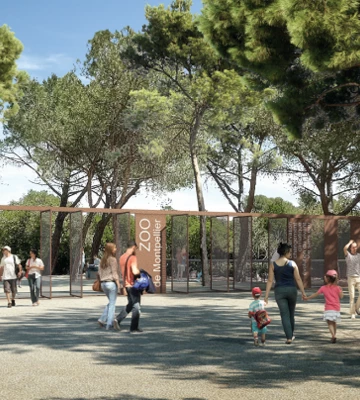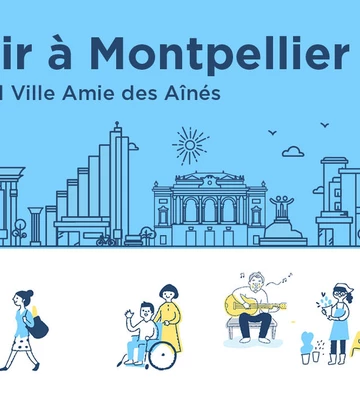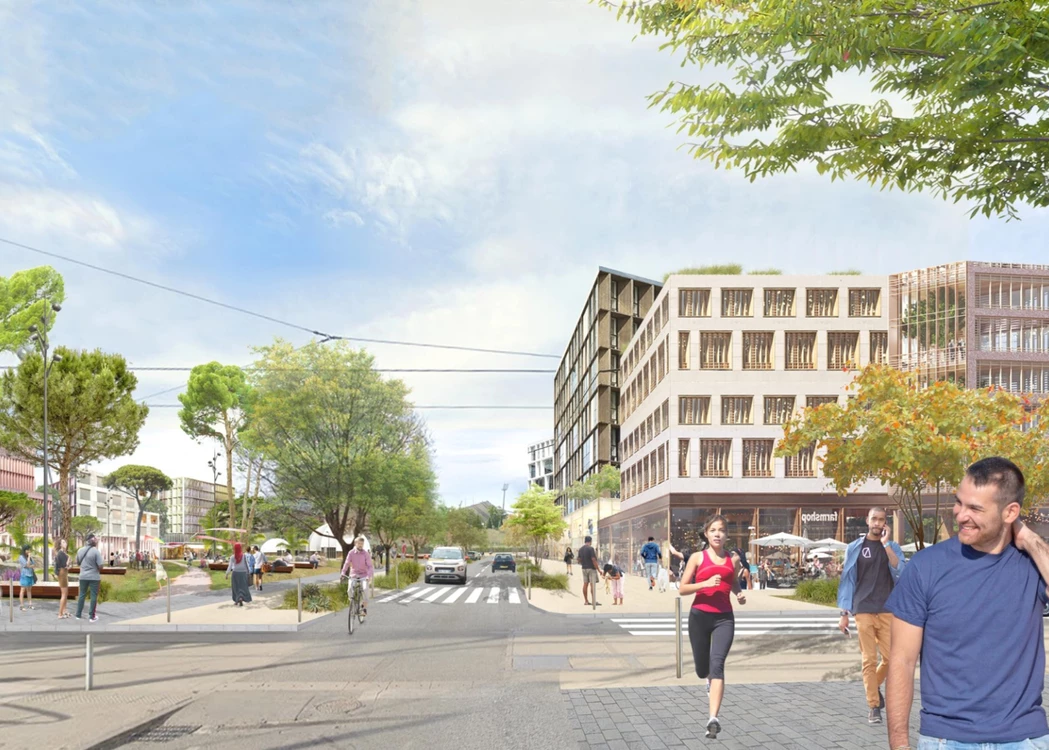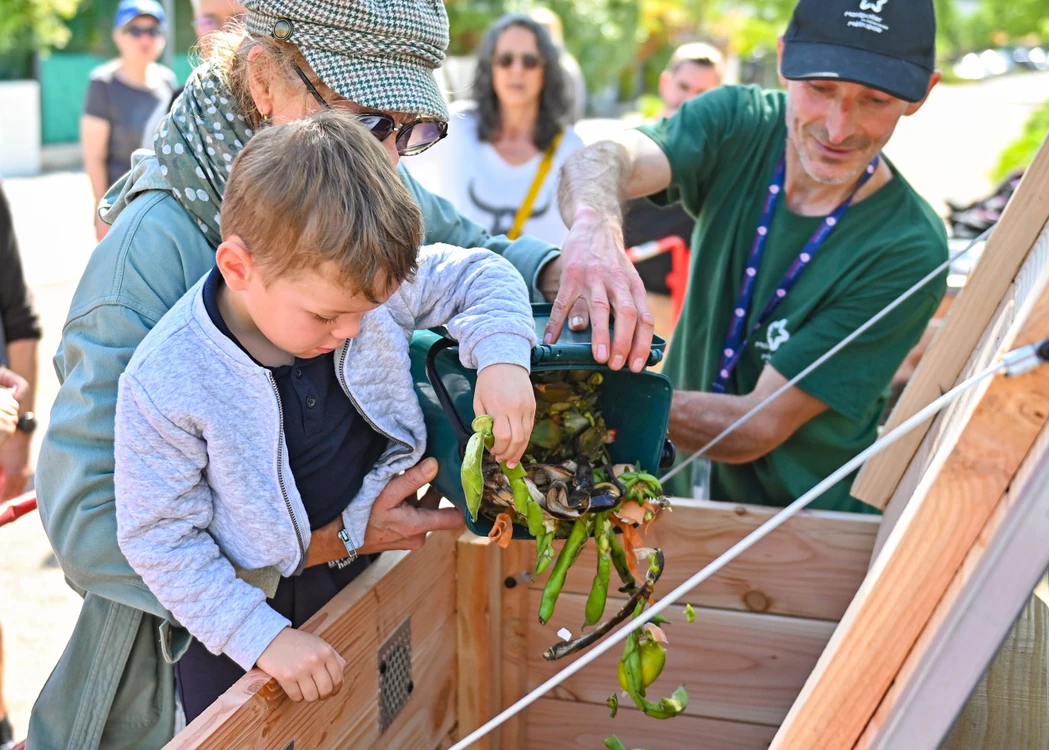My services in 1 click
The Metropolis agenda
26
March 2025
Au 27 March 2025
Job
TAF Salon in Montpellier
The 18th edition of the TAF (Work, Future, Training) fair in Montpellier will take place on March 26 and 27, 2025 at the Parc des Expositions from 9 a.m. to 5 p.m. An event open to all organized by the Occitanie Region, in partnership with France Travail, the Montpellier Youth Local Mission, the Hérault Department and Montpellier Méditerranée Métropole.
This event aims to allow each visitor to access all the information to:
• Find help
• Discover the training offers
• Find a job by meeting directly with recruiting companies
• Discover a profession and define a professional project
• Reorient towards sectors that generate employment
SEE YOU AT THE MEDVALLEE STAND!
Do you offer training and/or job offers in Health, Food-Agronomy-Agriculture, Environment? The MedVallée pavilion is here to welcome you! You will have the opportunity to benefit from the image of excellence of this dynamic and maximize your chances of filling your offers.
PRACTICAL INFORMATION
Free entry.
Access: tram line 3 Parc des expos station (towards Etang de l'Or)
Phone: 08 00 00 70 70
Route de la Foire 34470
Pérols
View the event
11
September 2024
Au 27 June 2025
Board games
Wednesday In'Games
Board games offered according to their availability and/or with free and independent access for everyone under the supervision of an adult.
From 10 a.m. to 11 a.m. and from 3 p.m. to 4 p.m.
Wednesday In'Games
You can also borrow games on site by contacting the reception of the Maison pour tous (except Wednesday). Conditions: leave an identity document as a guarantee, storage and return of the game in good condition.
All audiences
Information: 04 48 18 62 16
FREE ENTRANCE
3 Square Jean Monnet 34070
Montpellier
View the event
13
September 2024
Au 04 July 2025
Atelier Manuel
K'Fés In Ut'Opie
A la carte workshop for teenagers from 15 years old and adults.
You are free to register for as many sessions as you wish.
Come recycle your textile objects (bags, clothes, etc.) and give them a second life. Cut, transform, sew...
Teenagers, adults
Information: 04 48 18 62 16
Price: €9/session + Maisons pour tous card
3 Square Jean Monnet 34070
Montpellier
View the event
01
January 2025
Au 31 March 2025
Animation
Artistic Meetings from January to March 2025
The Maisons pour tous of the City of Montpellier are a place of development, meetings and exchanges. They contribute to the dynamism and conviviality of each neighborhood.
Thus, the Artistic Meetings, organized by the Maisons pour tous Albert Camus, Boris Vian, Marie Curie, George Sand, Rosa-Lee Parks, Voltaire and Albert Dubout, in the form of cultural events accessible to all, are an invitation to open yourself to art, a universal language, an inexhaustible source of astonishment and avenues for reflection.
Each month a theme is developed around local artistic news. Guided tours, conferences, collective creations, performances, internships and parent-child workshops are offered in order to explore and experiment with the topics covered.
The animation teams of the Maisons pour tous, driven by the values of popular education, secularism and public service, in partnership with associations and artists, invite you to these meetings to exchange and create together.
We wish you wonderful artistic discoveries!
118 Allée Maurice Bonafos 34070
Montpellier
View the event
24
February 2025
Au 28 March 2025
Educational workshop
Festival of Boud'choux and Little Moustaches
The 5 senses awakened! A whole week dedicated to early childhood up to 6 years old with the theme of the senses as a backdrop.
Introductory workshops, sensory games, a reading corner, shows, experimental spaces, a sensory motor skills course to awaken and deceive visual, tactile, olfactory, gustatory and auditory perceptions.
Toddlers up to 6 years old accompanied by an adult
Information: 04 48 18 62 16
Price: Maisons pour tous card, by reservation
3 Square Jean Monnet 34070
Montpellier
View the event
03
March 2025
Au 31 March 2025
Culture
Awareness and action for women's rights: “The power of female expression”
Awareness and action for women's rights: “The power of expression
“feminine”
Organized by the Antoine de Saint Exupéry House for All.
From 9 a.m. to 6 p.m.
On the occasion of International Women's Day, celebrated on March 8, the Maison
Pour Tous actively participates in these celebrations by offering various events and initiatives
in favor of women.
On the program: creation of a wall of expression, sharing of experiences and experiences. Collection of
memories and testimonies. Exhibition and participatory activities throughout the month of March.
Free entry, all audiences
For more information: 04 48 18 62 11
Antoine de Saint Exupéry House for All - 130 allée du Briol, 34070 Montpellier
130 Allée du Briol 34070
Montpellier
View the event
03
March 2025
Au 27 March 2025
Culture
Exhibition: “The Sublime Being (letters)”
Exhibition: “The Sublime Being (letters)”
Organized by the Maison pour tous Albert Camus and the association Mouvement du Nid de
Hérault (association engaged in the fight against sexual exploitation and support for
persons in prostitution).
On the program: Being (letters) Sublime.s is a collection of letters written by women
accompanied by the Mouvement du Nid, to real or imaginary women, sublimated by
portraits by photographer Amaury Welsch.
Opening of the exhibition on Thursday March 13, 2025 from 7 p.m. to 8:30 p.m.: on this occasion, the team of
Mouvement du Nid will be present for a meeting and discussion about its actions.
Audience: adults and adolescents
Free entry upon registration: 04 34 88 76 84
Albert Camus House for All - 118 allée Maurice Bonafos, 34070 Montpellier
118 Allée Maurice Bonafos 34070
Montpellier
View the event
03
March 2025
Au 28 March 2025
Culture
Exhibition: “Gender equality, where are we?”
Exhibition: “Gender equality, where are we?”
Organized by the Albert Camus House for All.
Surprising anecdotes and homemade “time lapse” (historical frieze game) on the theme. Post-its and an expression wall are installed at your disposal to share your point of view and your experience.
On the program: Maison pour tous Albert Camus offers an overview of equality between women and men. A timeline of the evolution of women's rights, quotes from famous people, portraits of women who have made things happen.
Free entry, all audiences
For more information: 04 34 88 76 84
Albert Camus House for All - 118 allée Maurice Bonafos, 34070 Montpellier
118 Allée Maurice Bonafos 34070
Montpellier
View the event
04
March 2025
Au 29 March 2025
Exposure
Photographic exhibition: “Reverse shots, intimate looks”
Photographic exhibition: “Countershots, intimate views” by photographer Laurent Allory, produced with the women supported by the Mouvement du Nid 34.
Organized by the Victor Hugo Media Library and the Nid de l'Hérault Movement.
Opening on Thursday March 6 from 5:30 p.m. to 7 p.m.
Through a series of intimate and sometimes touching photographs, the exhibition seeks to reveal the invisible. It aims to recall the humanity as well as the normality of women in prostitution. It also attempts to give a voice to those who are so often silenced, while preserving their identity. These photographs, taken in their everyday environment, capture fragments of their reality; each image is a discreet but powerful testimony to their personality, their resilience and their inner strength.
This third year of partnership between the Mouvement du Nid 34 and the Victor Hugo media library closes a cycle of artistic work in connection with women in prostitution, supported by the Mouvement du Nid 34. How can we make visible those who are neither seen nor looked at?
207 Rue Guillaume Janvier 34000
Montpellier
View the event
05
March 2025
Au 02 April 2025
Games
Afternoon sharing
With the association Bien Vivre in Aiguelongue, Association APS34
Come and play the outdoor games offered by the house for all in partnership with the Association Bien Vivre à Aiguelongue and APS34.
Information: 04 30 78 30 95
FREE ENTRANCE
1071 Avenue de la Justice de Castelnau 34090
Montpellier
View the event
06
March 2025
Au 26 April 2025
Exposure
Exhibition: “Broken Constellations”
This European, digital and feminist participatory project by the Queer Code collective reinvests the field of History to make visible the journeys of love and resistance of women who loved women during the Second World War. Despite the systems of structural invisibility concerning the history of lesbians, fragments are known thanks to the mobilization of German historians and German, French and European lesbian activists. The Queer Code collective has led a dynamic of cooperation between them and members of social families, members of families of the heart as well as researchers in order to be able to collectively produce these digital cartographies. Their work contributes to opening the doors of the closet of the History of Deportation.
Discover 6 stories of German and French lesbians: Christiane Moreau, Elsa Conrad, Henny Schermann, Marguerite Chabiron, Suzanne Leclezio and Yvonne Ziegler, arrested and deported because they were resistance fighters, or openly lesbians, and/or Jews.
On the program:
- Opening on Thursday March 6 at 6:30 p.m. in the presence of the Consul General of the Federal Republic of Germany in Marseille, Mr. Fried-Hansel Nielsen, and Mrs. Isabelle Sentis, coordinator of the exhibition.
- Conference around the exhibition: Broken Constellations, Wednesday March 19, 2025.
Free entry, all audiences
For more information: 04 67 60 48 11
4 Rue des Trésorier de la Bourse 34000
Montpellier
View the event
06
March 2025
Au 29 March 2025
Culture
Exposition éphémère et sonore : la poésie volcanique
Au cœur de cette exposition, qui mettra en lumière des poèmes issus de la créativité de Cressois, notamment des écoliers et pensionnaires de l’Ehpad L’Ostal du Lac, celui de Max Rouquette Véni/Viens prendra une place particulière.
Tiré de son recueil Les psaumes de la nuit, ce texte écrit en occitan et en français fera l'objet d'une captation sonore réalisée par Josiane Ubaud, ethnobotaniste et occitaniste cressoise. Une expérience immersive à partager !
Accès libre et gratuit
21 Chemin de Navitau 34920
Le Crès
View the event
07
March 2025
Au 23 April 2025
Exposure
Exhibition: “Velvet of Art”
From Friday March 7 to Wednesday April 23, 2025
Exhibition: “Velvet of Art”
Organized by the third place Isis & Philaé and the Montpellier artist Velvet of Art.
As part of International Women's Day, our third place, true to its values, will highlight feminine art, with the abstract work of Velvet of Art, an emerging artist from Montpellier.
Exhibition opening: Friday March 7 from 6:30 p.m. to 8 p.m.
Third place Isis & Philaé - 20 rue Roland Petit, 34000 Montpellier
20 Rue Roland Petit 34000
Montpellier
View the event
08
March 2025
Au 30 March 2025
Culture
Rayleigh exhibition at the Saint-Ravy space
Espace Saint-Ravy is pleased to host the Rayleigh exhibition by Guillaume Boilley from March 8 to 30, 2025.
Through paintings, installations and videos produced for the exhibition, the artist invites visitors into the heart of a fire, as a way of raising awareness of the ecological disaster to come while playing on the aesthetics of the sublime.
OPENING ON MARCH 7, 2025 6:30 PM
In the presence of Guillaume Boilley
In 2017, a forest fire in Grabels stained the sky of Montpellier red. Guillaume Boilley then discovered the phenomenon of Rayleigh scattering. He demonstrated that the color of the sky is linked to the meeting of sunlight and air molecules present in the Earth's atmosphere. Discovered by John William Strutt Rayligh at the end of the 19th century, this phenomenon affects the upper layers of the atmosphere, including the one that gives the sky its blue color or its orange color at sunset. Specifically, this phenomenon occurs when the size of the scattering molecules is smaller than the wavelength of the radiation. During forest fires, it is also this phenomenon that gives the sky red colors. The fine particles from the smoke then modify the wavelength of the light spectrum. Guillaume Boilley is struck by the contrast between the surreal beauty of this orange sky and the drama of the devastating fire. More than beauty, it is a feeling of the sublime, between admiration and dread, as Emmanuel Kant says. The artist places his work in this paradox by depicting a climate fiction where the world is crossed by fires because of climate disruption caused by human action. The song of a vanished bird punctuates the exhibition, whose climate is disrupted.
BIOGRAPHY
Born in Montpellier and graduated from the Ecole des Beaux-Arts de Montpellier in 2021, Guillaume Boilley practices painting, installation and video to explore the issues and consequences of global warming: forest fires, rising waters, droughts and other transformations of landscapes caused by humans. Through his approach as a committed artist, he collects, like an ecologist or a researcher, evidence attesting to the relationships between humans and their living and non-living environment.
After several monographic and collective exhibitions, and residencies (Maison Daura, 2022), he is currently a laureate of the Season 6 program supported by MOCO. After a stay and a collective exhibition in Toronto, Canada, the laureates will present an exhibition in Liverpool, England this summer.
2 Rue Cauzit 34000
Montpellier
View the event
10
March 2025
Au 22 September 2025
Poetry
Max Rouquette: Emission of traces of light
A poetic moment through the reading of extracts from the essential work of Max Rouquette Vert Paradis, in the program Traces de lumière hosted by the poet and author Christian Malaplate.
Rebroadcast on Saturday from 11 a.m. to 12 p.m. and possibility of listening to the podcast on www.radiofmplus.org
4 Rue Saint-Barthélémy 34000
Montpellier
View the event
12
March 2025
Au 25 June 2025
Circus
Moons Festival
LUN.ES is a circus and moving arts festival presented by Créature.s Créatrice.s in partnership with several cultural structures in the Montpellier metropolitan area such as the Théâtre Jean Vilar, the Halle Tropisme, the Domaine d'O, the Chai du Terral, the Friche Mimi, the Vista Chapelle, etc.
Inspired by the strengths and weaknesses of our plural humanity, we have imagined a festival composed of hybrid, surrealist and committed performances.
Highlighting total inclusivity where burlesque forms rub shoulders with more reflective shows, we present a great diversity of artistic teams.
LUN.ES aims to bring together diverse audiences around creative circus and its deeply humanist values.
LUN.ES is aimed at all generations and addresses the major societal and environmental issues of the 21st century.
155 Rue de Bologne 34080
Montpellier
View the event
23
March 2025
Au 26 March 2025
Movie theater
Spring of Cinema
In 2025, Le Printemps du Cinéma returns as an unmissable and major event of the cinematographic year! It allows all spectators to enjoy the movie theater experience with family, friends or alone, at a unique and exceptional price for 3 days.
Place de la Comédie 34000
Montpellier
View the event
27
March 2025
Theater
Forum theater on harassment: “Coming out of silence, let’s talk about it!”
Organized by the Parentalité 34 association, in partnership with the Ecole des Parents et des Éducateurs 34, the Espace Famille Adages, the City of Montpellier and the Ministry of National Education.
From 2 p.m. to 4 p.m.
Forum theater to open dialogue on situations of harassment and on what can be done to stop this game of silence and suffering on others.
Free event open to all
For more information: 06 11 93 42 63 or contact@parentalite34.fr
Adages Family Space - 191 rue Louis Aragon, 34070 Montpellier
191 Rue Louis Aragon 34070
Montpellier
View the event
27
March 2025
Culture
Spectacle : Max rouquette en corps
Les élèves de terminale de Magali Fraisse, autrice d’une thèse sur Verd Paradis, transmettent l’œuvre de Max Rouquette en voix et en corps.
Choisis dans Les psaumes de la nuit et Le tourment de la licorne, les poèmes seront proclamés et chorégraphiés sur scène par la chorégraphe Muriel Piqué.
Entrée libre
31 Avenue Georges Clemenceau 34060
Montpellier
View the event
28
March 2025
Workshop
Workshop: Making an “anti-annoyance” whistle and raising awareness of street harassment
From 2 p.m. to 4 p.m. every Friday in March (7, 14, 21 and 28)
Using the 3D printers of the Espace Gisèle Halimi fablab, come and make and personalize your “anti-annoyance” whistle that will allow you to report a situation of street harassment. These workshops will also be an opportunity to talk about street harassment: avenues of action to protect yourself, whether at the time or afterwards (care or legal support).
Free workshops by reservation by email to: emmanuelle.boyer@montpellier.fr or aurore.lafosse@montpellier.fr - 6 places per workshop
35 Rue de la Haye 34080
Montpellier
View the event
Map of the territory
Montaud
Le Château de Montlaur, mentionné en 1100, fut assiégé par les protestants en 1572 et en 1622, puis pris par le duc de Rohan, qui fit massacrer la garnison catholique et partiellement raser les murs. Montaud fut plus tard une baronnie, qui sera érigée en marquisat au XVIIIème siècle.

1
31
31
Saint-Drézéry
Propriété de l'Evêché de Maguelone au Moyen-Âge, le prieuré de Saint-Drézéry est un petit hameau qui grandit lentement.

2
31
31
Beaulieu
Construit en 1194 par le Comte de Toulouse Raymond VI ,le village d'Aïssadanègues, blotti au pied de son château, devint par la suite Beaulieu, du nom de la paroisse qui existait autour de la chapelle Notre Dame de la Pitié.

3
31
31
Restinclières
Situé au cœur de la plaine languedocienne, entre Montpellier et Nîmes, Restinclières doit son nom au mot "restincle" signifiant lentisque en occitan, un arbrisseau voisin du pistachier. Cette commune de 652 hectares, dont 75 sont urbanisés, est anciennement peuplée comme le prouve son église romane Saint Césaire du XIIème siècle.

4
31
31
Saint-Geniès-des-Mourgues
Son église fut fondée en 1019, une abbaye de bénédictines se développa autour. Tout fut démantelé par les protestants en 1621. Aujourd'hui le village, rattaché à Montpellier Méditerranée Métropole, est ancré dans la tradition camarguaise, dans celle du vin et de la pierre.

5
31
31
Sussargues
L'origine du village est sans doute à fixer à l'époque Gallo-Romaine, quand bien même l'occupation du site à l'époque protohistorique est vraisemblable, mais non attestée par des vestiges probants. Le nom du village évolue à travers le temps : de Sorcianico en 1004 à Sussargues en 1622, les variations sont nombreuses. Il faut attendre la féodalité (1194) pour voir le nom du village apparaître dans une charte le rattachant à la Seigneurie de Castries, où il demeurera jusqu'à la Révolution.

6
31
31
Castries
Castries doit son nom à un ancien castrum romain situé sur la voie Domitienne. Son château est mentionné dès le XIème siècle, reconstruit au XVème il est pris par le duc de Rohan en 1622. Erigé en marquisat en 1645, il devient un duché en 1788.

7
31
31
Saint-Brès
Les premiers témoignages de l'existence de Saint-Brès remontent au IXème siècle. Dès le XIIème siècle, le village se développe profitant de sa situation sur la route royale reliant Nîmes à Montpellier. A cette époque, la Villa S. Bricii appartient à l'Evêque de Maguelone et à ses successeurs.

8
31
31
Baillargues
Idéalement située en zone péri-urbaine, à 12 km de Montpellier, Baillargues est la 2ème commune la plus importante du canton du Crès avec plus de 7 000 habitants. Elle est située au carrefour des principaux axes de transports (A9, RN 113, lignes TGV et TER...). Baillargues est jumelée à la ville espagnole de Rocafort, de la province de Valence.

9
31
31
Vendargues
Tout près de la Méditerranée, proche des Cévennes, le village de Vendargues s'étire entre Cadoule et Salaison, deux rivières magnifiques, jamais à sec même au plus fort de l'été. Située à 7 km au nord-est de Montpellier en direction de Nîmes, Vendargues dispose également d'un accès à l'autoroute A9 : cette situation de carrefour est déterminante pour sa zone industrielle, qui accueille 170 PME et PMI.

10
31
31
Le Crès
Le Crès se situe à 6 km environ de Montpellier à mi-chemin entre la mer Méditerranée et les premiers reliefs du Pic Saint-Loup.

11
31
31
Castelnau-le-Lez
Castelnau-le-Lez est une commune française située dans l'est du département de l'Hérault en région Occitanie, en périphérie de Montpellier.
Exposée à un climat méditerranéen, elle est drainée par le Lez et par deux autres cours d'eau. La commune possède un patrimoine naturel remarquable : un site Natura 2000 (« le Lez ») et une zone naturelle d'intérêt écologique, faunistique et floristique.
Castelnau-le-Lez est une commune urbaine dans l'agglomération de Montpellier et fait partie de l'aire d'attraction de Montpellier. Ses habitants sont appelés les Castelnauviens ou Castelnauviennes. Elle compte 24 888 habitants en 2021, après avoir connu une forte hausse de la population depuis 1962. Elle est la deuxième commune la plus peuplée de l'agglomération de Montpellier, et la 7e du département de l'Hérault.
Exposée à un climat méditerranéen, elle est drainée par le Lez et par deux autres cours d'eau. La commune possède un patrimoine naturel remarquable : un site Natura 2000 (« le Lez ») et une zone naturelle d'intérêt écologique, faunistique et floristique.
Castelnau-le-Lez est une commune urbaine dans l'agglomération de Montpellier et fait partie de l'aire d'attraction de Montpellier. Ses habitants sont appelés les Castelnauviens ou Castelnauviennes. Elle compte 24 888 habitants en 2021, après avoir connu une forte hausse de la population depuis 1962. Elle est la deuxième commune la plus peuplée de l'agglomération de Montpellier, et la 7e du département de l'Hérault.
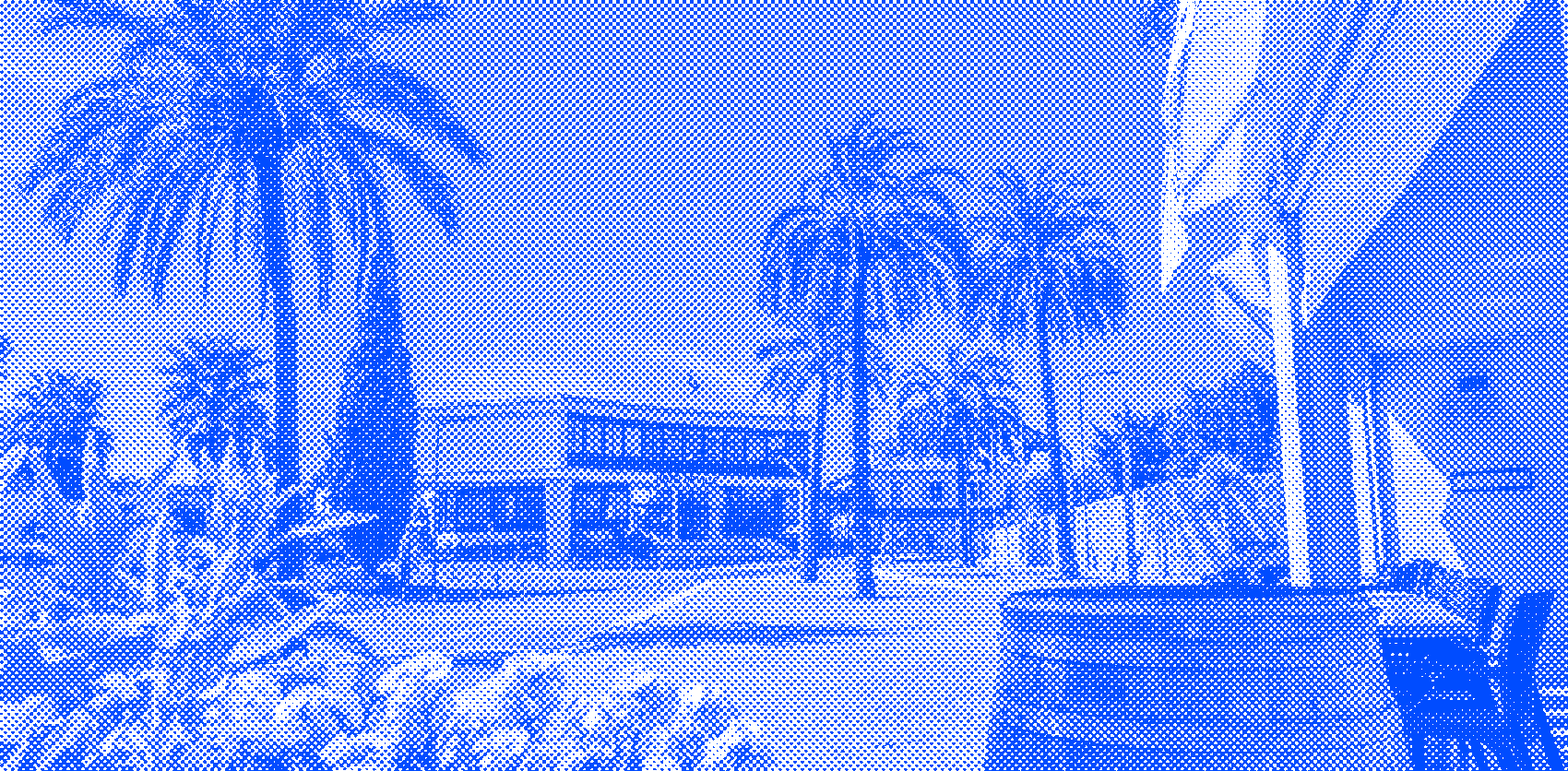
12
31
31
Jacou
Seigneurie au Moyen Âge, le site comprenait 240 habitants au XIXème siècle. La première trace de Jacou se trouve en 860 sous le nom de Jocon, selon certaines sources ce nom viendrait de Jacques, en souvenir des pèlerinages de Compostelle.

13
31
31
Clapiers
Dressé sur un mamelon calcaire, le vieux village de Clapiers est dominé par le clocher triptyque de son église du XIIème siècle. En contrebas, on peut admirer le château de style néogothique construit en 1878. Clapiers est idéalement situé : à 10 minutes de Montpellier, à 20 minutes des plages et du Pic Saint Loup, le village a su garder une activité commerciale à taille humaine et promouvoir un tissu associatif dynamique grâce à des structures offrant de nombreuses possibilités.

14
31
31
Montferrier-sur-Lez
Erigé au sommet d'une colline à pic de 150 mètres, vestige d'un volcan éteint, Montferrier domine ses alentours. Le vieux village ainsi que le reste des fortifications sont construits de pierres basaltiques qui expliquent sa couleur gris fer. Si les flancs de la colline sont arides, son pied est particulièrement fertile et toute la vallée en contrebas témoigne de l'abondance et de la diversité des cultures.

15
31
31
Prades-le-Lez
Simple villa en 804, ce village devient une paroisse en 1156.
7 000 habitants sont prévus à l'horizon 2020, soit environ 2500 de plus qu'aujourd'hui.
7 000 habitants sont prévus à l'horizon 2020, soit environ 2500 de plus qu'aujourd'hui.

16
31
31
Grabels
Cité en 1120, le château de Solas était relié au village par des murailles. Le nom de Grabels tire son origine de 2 mots languedociens : "gran" qui désigne le grain, ou même le grain de blé, qui est le grain par excellence, et le mot "bel", qui existe également en Français avec le même sens de grand, de belle taille.

17
31
31
Saint-Georges d'Orques
Les origines de Saint-Georges d'Orques remontent à la plus haute Antiquité, comme en témoignent les poteries et bronzes romains qui y ont été découverts. De ces "orcas", grands vases en terre cuite, le village aurait tiré son nom. Rattaché à l'évêché de Maguelone dès le XIème siècle, le hameau fortifié attendra le XVIème siècle pour acquérir son nom moderne : Saint-Jordi-d'Orques. Au cours du temps, la culture des céréales et de l'olivier cèdera peu à peu la place à la vigne.

18
31
31
Murviel-lès-Montpellier
Entourée de vignes et d'espaces naturels préservés, Murviel est aujourd'hui un lieu de promenade incontournable pour découvrir les origines gauloises et romaines de la Métropole de Montpellier.

19
31
31
Pignan
Village fortifié au Moyen Âge, son château est mentionné en 1019. Pignan possède une ancienne abbaye du Vignogoul fondée en 1150, une abbaye bénédictine fondée en 1178, puis cistercienne à partir de 1242. Son église fut construite en 1210.

20
31
31
Cournonterral
Le territoire de Cournonterral est habité depuis le Néolithique. Un tumulus, de nombreuses grottes, des poteries ainsi que du mobilier y ont été découverts. Différentes fouilles ont également révélé une présence Gallo-Romaine à travers des fondations de villas et des ustensiles.

21
31
31
Cournonsec
Situé à l'ouest de Montpellier, Cournonsec s'est harmonieusement développé depuis une vingtaine d'années dans le respect de l'environnement et des paysages alentour. Durant cette période, la population a plus que doublé et le village a su accueillir ses nouveaux arrivants tout en conservant son côté convivial et chaleureux qui le rend si attachant.

22
31
31
Fabrègues
Du latin "Fabricae" : forges, ce village fut habité, les vestiges d'un oppidum en témoignent, depuis au moins le VIème siècle avant J. C. Lieu de passage et d'accueil depuis toujours : Voie Domitienne, grand chemin royal (RN 113), le village existe en tant que communauté depuis le IXème siècle. Près de 1000 ans d'histoire riche en événements de toutes sortes pour notre village dont l'urbanisme particulier ("circulade") remonte au XIème et XIIème siècles.

23
31
31
Lavérune
Quartier général de Louis XIII en 1622.
Situé sur la Voie Domitienne, le vieux village entoure l'église (XIVème-XVIIIème siècles), alors que le château des évêques et son parc (XVIIème-XVIIIème siècles) se trouvent à la périphérie.
Situé sur la Voie Domitienne, le vieux village entoure l'église (XIVème-XVIIIème siècles), alors que le château des évêques et son parc (XVIIème-XVIIIème siècles) se trouvent à la périphérie.

24
31
31
Saint-Jean-de-Védas
"Villa de Vedatio" est mentionné en 1095. Le domaine du Terral est mentionné au IXème, il fut la résidence préférée des évêques de Maguelone.

25
31
31
Villeneuve-lès-Maguelone
Exposée à un climat méditerranéen, elle est drainée par le canal du Rhône à Sète, le Mosson et par divers autres petits cours d'eau. La commune possède un patrimoine naturel remarquable : deux sites Natura 2000 (les « étangs palavasiens » et les « étangs palavasiens et étang de l'Estagnol »), cinq espaces protégés (la réserve naturelle nationale de l'Estagnol, l'« étang de Vic », l'« étang du Méjean », les « salines de Villeneuve » et les « étangs Palavasiens ») et dix zones naturelles d'intérêt écologique, faunistique et floristique.
Villeneuve-lès-Maguelone est une commune urbaine et littorale qui compte 10 405 habitants en 2021, après avoir connu une forte hausse de la population depuis 1962. Elle est dans l'agglomération de Montpellier et fait partie de l'aire d'attraction de Montpellier. Ses habitants sont appelés les Villeneuvois ou Villeneuvoises.
Villeneuve-lès-Maguelone est une commune urbaine et littorale qui compte 10 405 habitants en 2021, après avoir connu une forte hausse de la population depuis 1962. Elle est dans l'agglomération de Montpellier et fait partie de l'aire d'attraction de Montpellier. Ses habitants sont appelés les Villeneuvois ou Villeneuvoises.
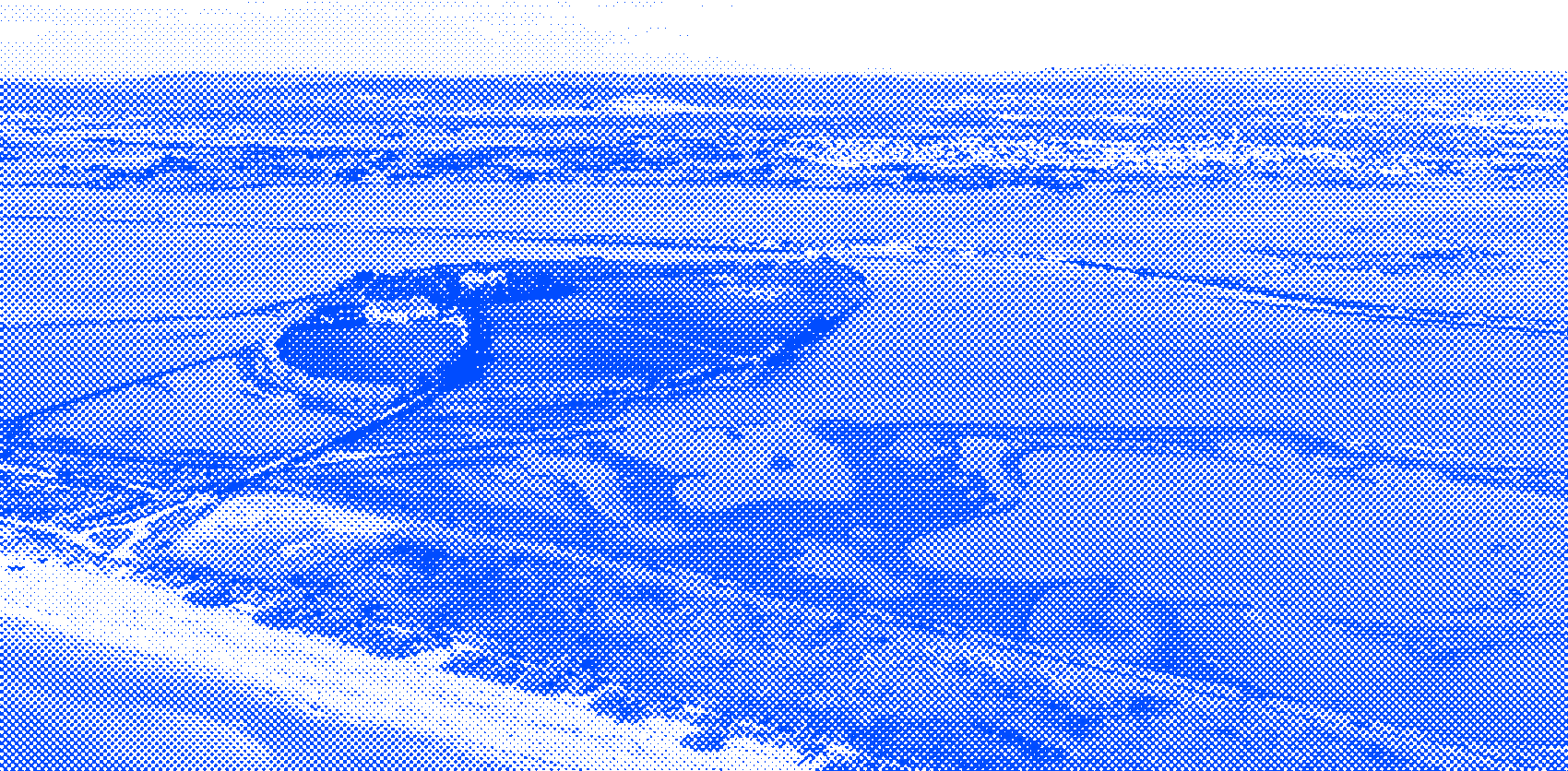
26
31
31

27
31
31
Lattes
Créé par les Etrusques dès le VIIème siècle avant JC, Lattara ou Latera fut probablement le premier port d'Europe occidentale. Commerçant avec les Grecs et les Romains, Lattara est un port très actif jusqu'au IIIème siècle après JC. Puis les accès maritimes changent et la ville va connaître un engourdissement qui durera tout le Moyen-Age.

28
31
31
Pérols
À l'origine, Pérols était un village de pêcheurs et de vignerons installé au bord d'un étang, à quelques encablures de la mer. À partir des années 50 son développement s'accélère et, très vite, sa population passe de 900 à près de 8000 habitants. Malgré cette progression rapide, cette petite ville de la banlieue montpelliéraine a su conserver tout le charme d'un village de petite Camargue en perpétuant, notamment, les fêtes typiques de cette région qui font une large place à la tradition taurine.

29
31
31
Juvignac
La ville de Juvignac s'étend entre garrigues et vignes dans la toute première couronne périurbaine à l'ouest de Montpellier.

30
31
31
Montpellier
Organisée en 8 grands quartiers comme autant de petites villes, vous pouvez y trouver de nombreux équipements publics et services municipaux.

31
31
31
Hôpitaux-Facultés
Sous-quartiers : Aiguelongue, Euromedecine, Hauts de Saint-Priest, Plan des 4 Seigneurs, Malbosc, Vert-Bois.
Quartier étudiant par excellence, il jouxte les facultés de lettres, médecine, pharmacie et de sciences. L’hôpital Lapeyronie et d’autres centres de soins sont situés dans ce quartier.

1
8
8
Montpellier centre
Sous-quartiers : Figuerolles, Gambetta, Antigone, Les Beaux-Arts, Boutonnet, Les Arceaux, Gares, Les Aubes, Centre Historique, Comédie.
Aussi appelé l'Ecusson, le quartier Centre est le plus ancien de la ville. Avec ses ruelles pavées et ses bâtiments anciens, il raconte l’histoire de Montpellier depuis le Moyen Âge. La Place de la Comédie est l’un des lieux les plus célèbres. On y trouve l’Opéra, la statue des Trois Grâces et de nombreux cafés où se prélasser au soleil.

2
8
8
Les Cévennes
Sous-quartiers Alco : La Chamberte, Pergola, Petit-Bard, La Martelle, Montpellier Village, Saint Clément.
Les Cévennes est un quartier calme comptant des écoles, commerces et des espaces verts appréciés des familles. Le Parc de la Guirlande est idéal pour se promener ou faire du sport. Un bon réseau de transports permet d’accéder rapidement au centre-ville, notamment en empruntant la ligne 3 du tramway.

3
8
8
Port Marianne
Sous-quartiers : La Pompignane, Richter, Lironde, Millénaire, Rives du Lez-Consuls de mer, Grammont, Odysseum, Cambacérès.
Port Marianne est un des quartiers les plus récents de Montpellier. Il se distingue par son architecture contemporaine marquée par de nouvelles "Folies". De jolies promenades le long du Lez s'offrent aux habitants du quartier.

4
8
8
Croix d'argent
Sous-quartiers : Pas du Loup, Tastavin, Estanove, Lepic, Mas Drevon, Ovalie, Les Grisettes, Bagatelle.
Au cœur du quartier, le parc Tastavin est un espace vert apprécié des familles. On y trouve des aires de jeux, des chemins pour se promener et de grands arbres qui offrent de l’ombre en été. Son marché éponyme, ainsi que plusieurs commerces animent la vie du quartier.

5
8
8
Prés d'Arènes
Sous-quartiers : Les Aiquerelles, Saint-Martin, La Restanque, Tournezy, La Rauze, Cité Mion.
Prés d'Arènes est bien desservi par le tramway et les grands axes routiers. Il permet de se déplacer facilement vers la mer ou vers le centre de Montpellier. Des commerces et restaurants animent le quartier, tandis que le grand parc de La Rauze permet de profiter de la nature en ville.

6
8
8
Celleneuve
Celleneuve est apprécié pour son marché, ses parcs et son cinéma historique, Nestor Burma.
Avant de faire partie de Montpellier, Celleneuve était un petit village indépendant. On y trouve encore des rues étroites et des maisons anciennes qui rappellent son histoire. Témoin de son passé, l’église Saint-Sauveur, datant du XIe siècle, est l’un des plus anciens édifices religieux de Montpellier.

7
8
8
Mosson
Sous-quartiers : La Paillade et Les Hauts de Massane.
Du nom de la rivière qui le traverse, le quartier de la Mosson occupe une place de choix dans le cœur des supporters du MHSC, puisque c'est dans son stade qu'évolue l'équipe de football de Montpellier. Le Parc Malbosc est également très apprécié, notamment des familles, pour ses aires de jeux et ses sentiers de balade.

8
8
8
Major projects

Renforcement de la sécurité
La Métropole et la Ville de Montpellier mènent une action résolue pour garantir la sécurité, la tranquillité publique et la qualité de vie des montpelliérains. Elle se caractérise par le développement des effectifs et la mise en place d’outils de dernière génération.
Découvrir
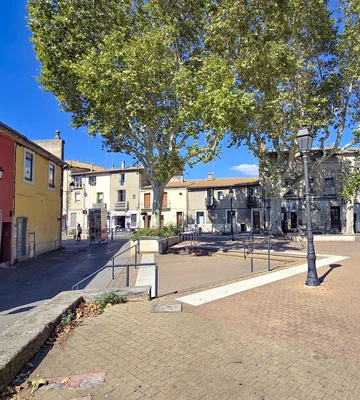
Reconquête du vieux village de Celleneuve
Sécurisation du chemin des écoliersFin du transit et sécurisation des écoles : fermeture de la rue Marcelin Albert côté Esplanade1er février 2024 : piétonnisation des extrémités de la rue Marcelin Albert (côté Place Renaudel et côté Esplanade)Créa...
Découvrir

